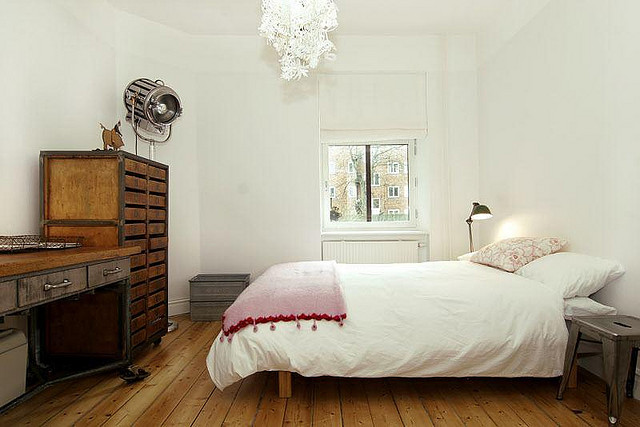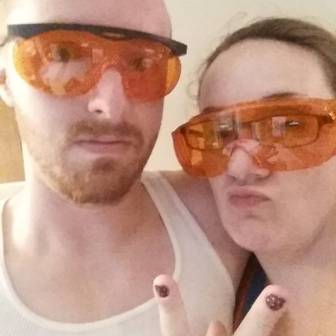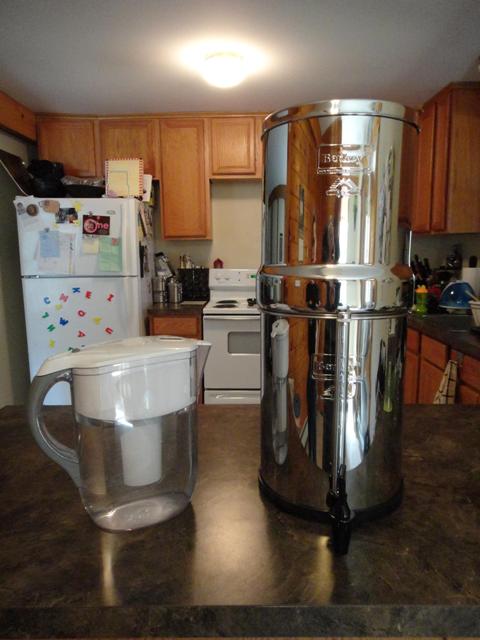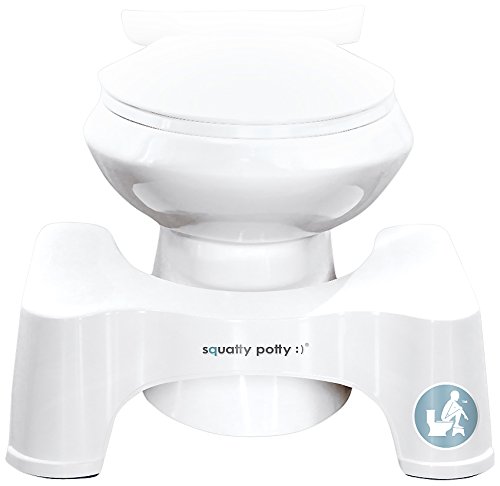
Note: this is Day 6 of my series on “7 Days to Build a Better Body.”
For most of us, our home is our primary habitat. It’s where we spend the lion’s share of our time (even if we are asleep for much of it). So, what are the best bang-for-your-buck investments for creating a healthier home environment?
Well, some of the things we’ve done in our home include changing our lights, getting black-out shades for our windows, using a standing desk, installing blue-blocking software on our computers and phones, switching to glass for food storage instead of plastics, getting some houseplants, and using more natural cosmetic and cleaning products (e.g. soap, vinegar), among many other things.
I’ve since learned that there’s so much more that can be done to boost the health of your home – whether you’re living in the city, country, a house, or an apartment. Just beware that this is one of those areas where the rabbit hole goes very deep. You could easily spend thousands of dollars just covering some of the basics. And tens of thousands of dollars if you wanted to be thorough. And there are also a lot of gimmicks out there that rely on shady science or no science to promote their products.
But today, I want to focus on some healthy home hacks that are:
- reasonable & sensible
- low cost (or at least have low-cost options)
- high yield in benefits
In other words, the practical stuff that most people can implement without too much difficulty. These are some of the things that I think should be a high priority for most homes.
1) Optimize Your Lighting and Limit Artificial Light Exposure.
Perhaps the simplest, least expensive, and biggest bang-for-your-buck healthy home hack is to change the lighting in your home. And more importantly than that, start treating your lighting differently when you’re at home.
Artificial light wreaks havoc on our biological clock, especially after sunset. Blue light, in particular, screws up all kinds of things when it’s dark outside. Fortunately, there are many easy things we can do to limit the negative effects of artificial light, and one of the simplest things is to install blue light blocking software on your smart phones, tablets, and computers (there may even be apps available for some TVs). Get f.lux for your computers and Twilight for your smart phone.
From there, the most important thing you can do is to darken your bedroom completely. I’m talking pitch black like a cave. Keep your lights off, turn off your night lights, and use blackout shades or curtains (aluminum foil or a black trash bag make an inexpensive substitute). We even covered the little green light on our smoke detector to reduce the light it emits (we can still see if it’s lit when we look really closely). I recommend that you do a light inventory tonight before going to bed. If it’s not pitch black in your room when you go to bed, figure out where the light is coming from and kill it.

We’ve actually done the same thing between our bedroom and the bathroom. All lights in the vicinity are turned off, and all little lights that can’t be turned off have been covered up – often with tiny strips of black electrical tape. You can also get special light bulbs that don’t emit blue light. And when all else fails, a quality sleep mask may do just the trick.
Apart from that, you’ll want to do everything in your power to limit your exposure to artificial light after sunset, and especially as you get closer to bedtime. You can do this by…
- keeping unnecessary lights turned off
- using dimmers if you have them
- using candles
- covering up all of those little blue, green, and red dots that tell us our electronics are off
- wearing these cool-dude sunglasses, which are designed to block blue light so that you can sleep better at night.
Thinking differently about lighting and making a few key changes can go a long way toward helping you sleep better at night. And we all know how important sleep is, don’t we?
2) Filter or purify your water, if necessary.
Whether your water comes from a well or a public water supply, if it’s contaminated, that’s bad news for your health. Unfortunately, most municipal water contains all kinds of nasty things you wouldn’t want to drink. So, it’s money well-spent to get a water filtration or purification system in place for your home.
We’ve been on well water for the past several years. After having our water tested, we decided to get a Royal Berkey Water Filter (note: we didn’t need the fluoride filters), which is what we use for all of our drinking water. The smaller Britta filter that we used to use wasn’t large enough or fast enough for us anymore. And after a little research, I learned that the Berkey would filter out a much wider range of bad stuff, while keeping the good stuff. Plus, over a few years, it would eventually save money over the expensive and quickly used up Britta filters.
Here they are in all their majesty…

Another sensible option would be to install a special showerhead filter to catch some of the nasties before it’s absorbed by your skin. We used this Berkey showerhead filter at our last home. There are tons of different models available, and the one you should get depends on what’s in your water.
Apart from that, you could also consider a whole house system like reverse osmosis. But then you’re talking about spending some money, and you’ll want to do your own research to weigh all of the options based on your needs.
3) Start switching over to natural personal care and cosmetic products.
If you rub it on your skin, or otherwise use it on your body (e.g. soap, shampoo, deodorant, toothpaste, makeup etc.), it should be as natural as possible. So, if there’s a long list of ingredients or if you can’t pronounce some of their names, it’s probably not the healthiest product to be using. A good rule of thumb is that if you can’t eat it, you probably shouldn’t use it.
Nowadays, there are plenty of all natural (or mostly natural) cosmetic and personal care products, and inexpensive options can be found if you shop around. We’re partial to Burt’s Bees and Tom’s of Maine, among a few others. And in many cases, it’s really not that hard to make your own. My wife makes all of our soap, deodorant, lip balm, lotions, salves, and all kinds of crazy stuff. She even made me a couple different kinds of beard oil. We actually save a lot of money this way.
This is one of the more difficult changes on this list since most of us have grown accustomed to using certain products. Not to mention that we all have our favorite toothpaste, and there is a certain level of brand loyalty involved, too. So, I suggest starting with just one thing at a time, and I think soap is a wise first option.
4) Use glass containers for food storage.
Another very simple change would be to simply replace all of your plastic food storage containers (e.g. Tupperware) with glass. Plastics and other materials can and do leech carcinogens into our food, which we then eat. And we all know how that ends, don’t we? Glass doesn’t have this problem. And given that roughly one out of every two men, and one out of every three women will get some kind of cancer in their lifetime, this is a smart, small step towards reducing your risk.
Since we do some of our own canning, we use Mason jars like it’s nobody’s business. But any other glass storage containers will do the trick.
Note: there are actually a ton of things that can be done in and around your home to reduce the risk of cancer, including a few of the things on this list. This could very well be an article in-and-of-itself.
5) Start transitioning to natural cleaning products.
Similar to personal care products, the things we use to clean our homes effect our health – and usually not in a good way. Most people liberally douse their floors, countertops, and other surfaces with all kinds of hazardous chemicals.
Fortunately, soap and water can handle most issues. Plus, common household items like vinegar, baking soda, borax, and even salt can be used for multiple cleaning applications. And these things don’t come with multiple health warnings on the label.
Of course, you could just buy cleaning supplies by companies like Seventh Generation, which is available in most stores. You’ll pay a little more, and some brands are definitely better than others (e.g. some Seventh Generation products aren’t all that different from conventional cleaning supplies). So, you do need to read labels.
Also, we are big fans of Charlie’s Soap for our laundry detergent. And with all the Siffer-kids running around these days, we buy it in mega-bulk.
6) Get a Squatty Potty.
OK, Okay! You got me. This one isn’t necessarily a high-priority healthy home hack. But I’ve been using my own homemade Squatty Potty since this past summer, and I think it’s a great excuse to get some more squat time during your day.
I’m all about integrating movement into our normal day-to-day activities (e.g. 5 Fitness Hacks to Get Fit While Brushing Your Teeth), and this is a simple way to do that.
And as one Amazon product reviewer noted, “This changes everything. Well, okay… just pooping.” You can read the whole hilarious review here.
Now, I haven’t noticed any major changes since I started using this. I spend a little less time in the bathroom. Things go a little smoother. I certainly don’t have any time to read anything. But overall, I haven’t noticed any major improvements like some of the testimonials claim. But so far, so good, and I think I’m going to keep it up for the foreseeable future.
Final Words
Gradually improving your habitat (i.e. your home) is a never-ending challenge, but a little bit of effort and well-chosen hacks can go a long way. Remember that this is a process. You don’t have to completely overhaul your home in one fell swoop.
Please tune in tomorrow for the final post in this week’s series on 7 Days to Build a Better Body. I’ll be sharing about what to do on your “off days” for optimal rest and recovery. You can find links to some of the other posts in the series at the very bottom of this post.
And if you’re interested in a month-long series on building a better body, please let me know by signing up for the newsletter (i.e. waiting list). If I get enough interest, I’ll try to put something together after the New Year.
.jpg)
![]()
Health-First Fitness Coach
P.S. If you liked this post, then please signup for the newsletter, or follow me on Facebook or Twitter for daily updates and other interesting info.
Photo credit: 1.
Further Reading: 7 Days To Build A Better Body
Day 1: Your New Morning Fitness Routine To Build A Better Body
Day 2: The 7 Key Components of a Successful Diet
Day 3: How to Manage Stress Like a Champ
Day 4: 5 Simple Exercises to Reverse the Damage From Sitting
Day 5: How to Stay Healthy When Eating & Drinking Out


Been loving these articles! Great ideas some I’m going to try esp the more natural cleaning products and the water filter system.
Thanks, Mom :)
John, I think you are most wise in taking at least one day off to rest. Years and years ago there was a running guru who used to run about ten miles a day 7 days a week in all weather conditions (Jim Fixx). Well, his heart muscle became so large and the walls so thin, he blew out his heart while running. About that time I was a “runner ” and trying to be a power lifter. I quickly learned not to power lift more then once a week and science has verified that you need at least two to three days recovery between sessions of serious heavy exercise. Thanks for the great articles, especially alternative exercises and your special slant on everything you write. Dr. Don Byk
It’s my pleasure, Don. Thanks for reading.
John… I continue to say thanks for your thoughts/exposure/education on these matters. I appreciate your making this – what I consider, common sense issues – which unfortunately, is not that COMMONLY know, more exposure. Kudos. Keep it up.